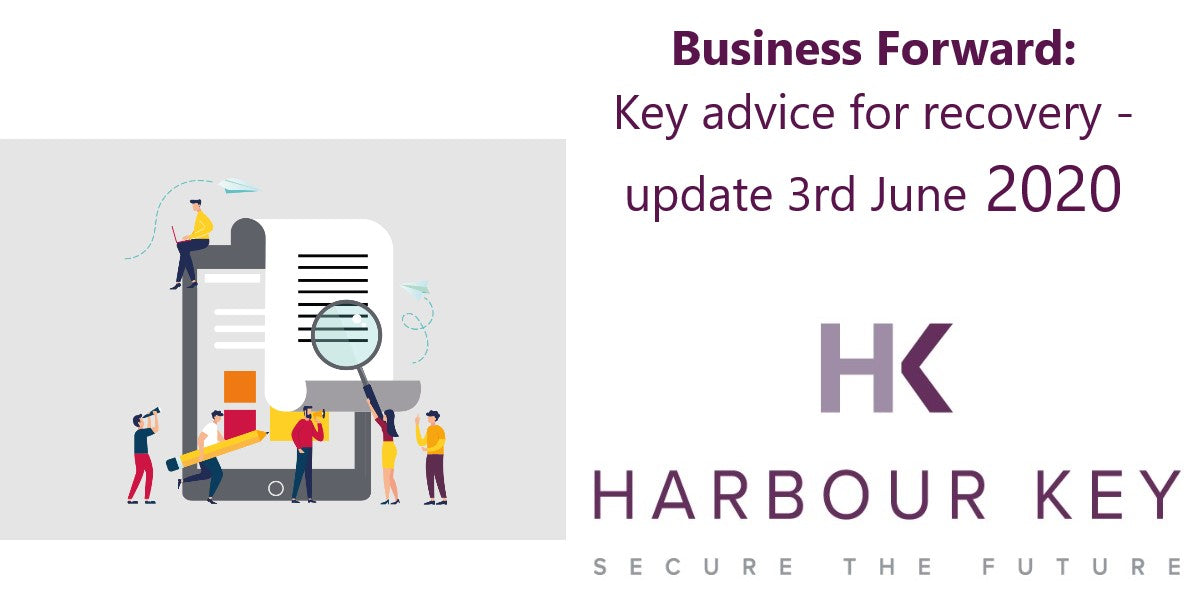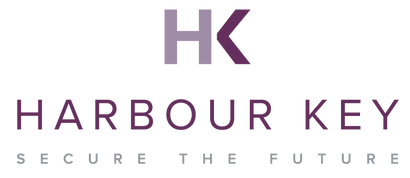
This update is written and posted on 3 June 2020 and is likely to quickly become out of date. We will endeavour to update information as it becomes available.
Previous updates and other useful information can be found at our WEBSITE.
As we all hopefully start to move away from concentrating solely on survival and are now shifting our focus towards recovery, we will continue to provide you with the most up to date information and what can be done to keep you and your business moving out of lockdown.
As part of the Friday evening Government update, the Chancellor made two significant announcements, one in respect of the Job Retention Scheme (JRS), the other in respect of the Self-Employed Income Support Scheme (SEISS). Both involve key dates, before which action is likely to have to be taken.

Job Retention Scheme (aka Furlough Scheme)
You may all be aware that the JRS was established in March 2020 and went live on 24April to help cover the wages of furloughed employees as a result of the Covid-19 pandemic, so as to minimise the number of employees who would lose their jobs. The details of what the scheme would look like following its extension from 31 July, when it was originally planned to close etc, had been eagerly awaited. It is the most popular of the Government’s Covid-19 support packages.
The key points the news media focused on were: when the scheme would close, the inclusion of part time workers and how employers will make contributions to the scheme.
However, the more immediate and important part of the announcement is that the scheme will close to new entrants from 30 June, meaning that an employee must have been furloughed for a period of at least three weeks prior to this date to be eligible for furlough from 1 July. Therefore, the last date an employee can be furloughed for the first time under the scheme is 10 June. If an employee has not been furloughed by the 10June, then even though the scheme continues to operate, they cannot be added to the scheme. (The same applies to any employer, who may not have used the scheme yet, if they do not furlough by 10th June any employees, then they will not be able to use the scheme).
In addition, the Government has introduced a maximum limit to the number of staff who can be included on a claim from 1 July 2020. This is equal to the number of staff claimed for before this date.
As businesses are now making decisions as the country starts to move out of lockdown, businesses will need to consider their size of workforce required, use of the furlough scheme, with some key decisions being made before 10 June. If it is decided later than 10 June that there is insufficient work for those who have not been furloughed previously, the only options are redundancy or reduced working hours.
Government contributions will be tapered from 1 August, with employers also being asked to pay a percentage towards their employees' wages. The changes will be introduced as follows:
- July – no change. The Government will continue to pay 80% of wages capped at £2,500 plus employer national insurance contributions and minimum pension contributions (as it is currently).
- August - The Government will continue to pay 80% of wages up to a cap of £2,500 but employers will pay ER NICs and pension contributions – for the average claim, this represents 5% of the gross employment costs that they would have incurred if the employee had not been furloughed. Smaller employers will have some or all of their employer NICs costs covered by the Employment Allowance, so the government says they should not be significantly impacted by that part of the tapering of the Government’s contribution.
The minimum reporting period for a furlough claim will be 1 week from 1 August 2020.
- September – the Government will pay 70% of wages up to a cap of £2,187.50 for the hours the employee does not work – employers will pay ER NICs, pension contributions and 10% of wages to make up 80% of the total up to a cap of £2,500.
- October - the Government will pay 60% of wages up to a cap of £1,875 for the hours the employee does not work – employers will pay ER NICs, pension contributions and 20% of wages to make up 80% of the total up to a cap of £2,500.
Where employees return to work on a part-time basis, the employer will be required to pay a normal wage for the hours actually worked.
Part-time furlough - From 1 July 2020, employers will be able to bring previously furloughed employees back to work on a part-time basis. Until 31 August 2020, the Government will continue to pay 80% of wages for any normal hours the employee does not work.
Employers can decide the hours and shift patterns employees will work and will be responsible for paying their wages in full for the working part. This means that employees can work as much or as little as the business needs. There is no minimum time for which staff can be furloughed.
Any working hours arrangement agreed with the employee must apply for at least one week and must be confirmed to the employee in writing. This will probably require a written amendment or replacement of the current furlough agreement. Again, per our previous advice, document decisions, discuss with employees, seek employment advice etc.to prevent the risk of future claims.
Further details on how flexible furloughing will operate as well as how claims will need to be calculated from 1 July onwards are expected to be published on 12 June.
Further details of the announcement and links to HMRC updates
 Self-employment Income Support Scheme (SEISS)
Self-employment Income Support Scheme (SEISS)
The SEISS has been extended. A second and final grant will be available when the scheme opens again in August 2020.
If you are eligible and want to claim the first grant you must make your claim on or before 13 July 2020.
The online service for the second and final grant is not available yet. We will let you know when it goes live.
Eligibility will not change, so if you were entitled to the first grant, then you can claim the second, which will be a taxable grant worth 70% of your average monthly trading profits, paid out in a single instalment covering a further 3 months’ worth of profits, and capped at £6,570 in total (a reduction from the £7,500 for the first grant).
Details about the scheme can be found at HERE
Covid19 Tax Legislation
In the raft of Government information that came out early Saturday morning following the Friday evening briefing, draft legislation was issued confirming the taxability of the various parts of the Government support package. As we have advised, the JRS (although money received by the employer is paid as salary, so tax neutral), SEISS and business rates grants are taxable income.
The legislation will also give HMRC powers to recover payments to which recipients were not entitled under the JRS and SEISS or where the JRS has not been used to pay employees, make pensions contributions, pay PAYE or National Insurance contributions. HMRC will be able to do this by raising Income Tax assessments or requiring taxpayers to submit a self-assessment tax return. (This includes being able to take action against directors of companies that have become insolvent because the directors acted improperly and have benefited.)
HMRC will also be able to charge a penalty in cases of deliberate non-compliance, the failure to report is to be treated as “deliberate and concealed” triggering a 100% tax geared penalty. It is therefore important that you inform us of what support you have received, where we have not been involved, so we do not miss out on the reporting.
Use of Government Supported Loans
Company directors are not being required to provide personal guarantees for loans of less than £250,000 under the CBILS scheme and none are required for the bounce bank loan scheme. However, it is a requirement of the loans that they should be used to help the business to survive and we are picking up “snippets” that loans are being used for inappropriate purposes such as to repay loans made by directors to the business, to repay the directors’ personal borrowing or buy a new classic, privately owned car!
There is a false assumption that if the company is unable to recover from the impact of Covid-19 and subsequently enters into an insolvency process, then responsibility for repaying the loan will remain solely with the company and liability would not be transferred to directors, as no guarantee has been given. However, this is not the view we are taking. If the funds are not used for the business, it is highly likely that the directors will be viewed to have acted improperly and breached their fiduciary duties or abused the loan scheme. While wrongful trading provisions have been suspended in response to the Covid-19 pandemic, other provisions of the Insolvency Act and Companies Act remain in full force and operation. Directors need to be mindful of potential misconduct regarding how funds are used.
On speaking with a licensed insolvency practitioner, as an example, if a company debt includes some that is personally guaranteed or personally owed to directors or their associates pre Covid-19 and a director chooses to only repay debts with a personal link, leaving unsecured creditors unpaid, this would be viewed as the director making a preference for themselves at the expense of the creditors. This is a point that the appointed licenced insolvency practitioner is likely to challenge and it could lead to personal liability for repayment. (We have seen similar actions, where a company used what would now be viewed as an aggressive tax strategy to reward directors which was successfully challenged by HMRC, who then sought recovery from the directors who benefited, as the company had been closed.)
Business owners/directors carrying out restructuring of borrowing taken pre Covid-19 using Government supported lending should seek advice.
As ever, matters are still developing and we will endeavour to keep you up to date, flag to you opportunities and signpost to the key details as best as we can via our weekly updates. A summary of the Government’s support schemes can be found at our website, including a list of non-Government funding opportunities, which we update regularly and can be found HERE.
We know that this is a very difficult time for all businesses and some difficult decisions are having to be made. We have spoken to hopefully all of you and if not, we would like you to know that we are here ready to help if you need us to provide advice, deal with queries, or just be a business sounding board.
Contact us here
#Stay Alert, #Control The Virus #Save Lives

 Self-employment Income Support Scheme (SEISS)
Self-employment Income Support Scheme (SEISS)

